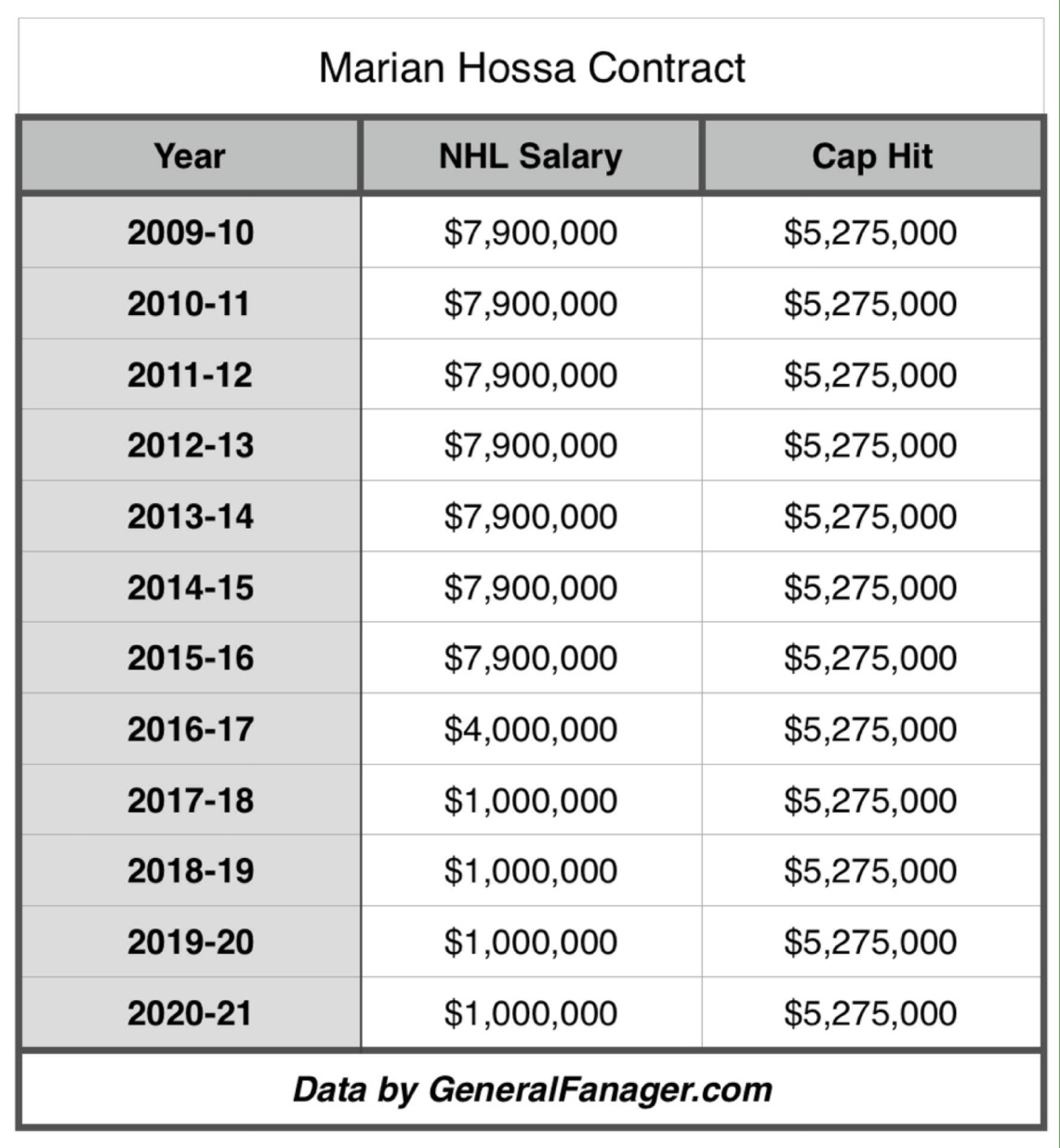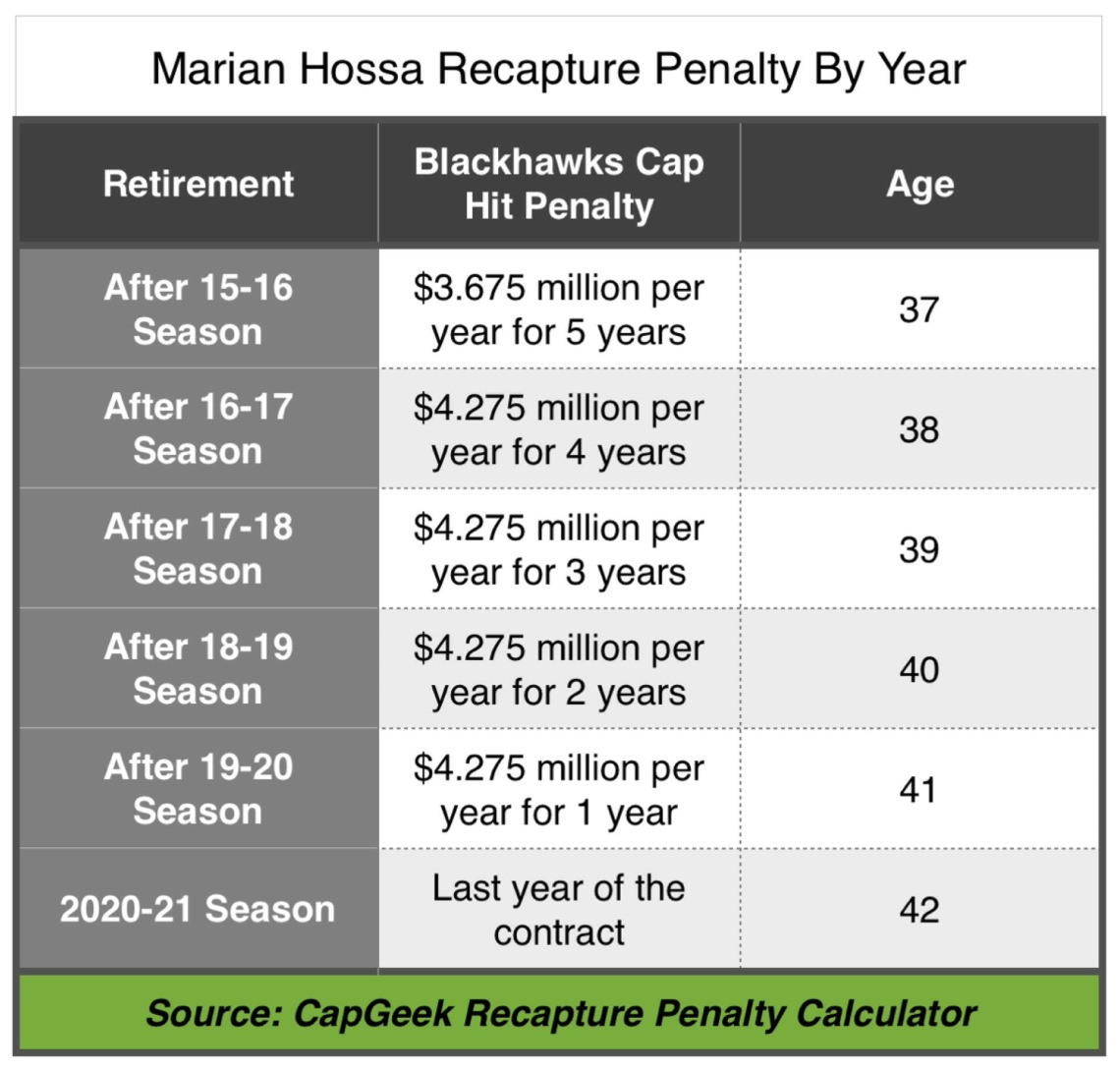Welcome to Blackhawks Breakdown, your home for Chicago Blackhawks advanced stats and salary cap info. Follow me on twitter, @HawksBreakdown. Thanks for reading and enjoy the article.
I’m not going to dive too deep into this one, but rather just give the facts. By only going over the main points, I hope to not confuse anyone. So where do we begin.
Well, if you have read my piece on how a salary cap hit is determined, then you know a players cap hit doesn’t change from year to year. Instead the cap hit is configured by taking total salary divided by total years which equals the average annual value or cap hit.
Let’s take a look at Marian Hossa’s entire contract. 
One can see that Hossa gets paid most of his salary early on and very little late in his deal. This was drawn out to circumvent the NHL salary cap. If the salary paid was even throughout the contract, Hossa would give up over $21 million if he retires four years early. Instead, the contract is front loaded. This means that if Hossa retires with 4 years left on his deal, he will only be throwing away $4 million in total salary.
In essence, Hossa would be like a $7.9 million cap hit player with an actual cap hit of $5.275 million if he retires early. The deal was worked out in an attempt to navigate around the salary cap. Which, at the time of the signing was fine.
But in 2013, the new CBA introduced a recapture penalty to penalize these type of long term front loaded contracts where the player is expected to retire before the end of the deal.
If the player retires early, the new rule adds a cap hit for the rest of the contract to the original team that signed the deal. The idea was put in place to prevent teams from cheating the salary cap.
So let’s take a look at the recapture penalty cap hit the Blackhawks would obtain if Marian Hossa were to retire year-by-year. 
I researched multiple sources and they all had the same data. I ended up sourcing Cap Geek, a site that once had a recapture penalty calculator.
If Hossa retires after this season (15-16), the Blackhawks would have a cap hit of $3.675 million per year for the 5 remaining years of the contract. Again, this is to make the Blackhawks pay for all the cap savings earlier in his deal.
If Hossa retires after any of the remaining seasons (16-17 to 19-20), the Blackhawks will have a cap hit of $4.275 million on the books that would stay until the 2021-22 season (the season in which Hossa is no longer under contract).
Even if the Blackhawks trade Hossa and he retires, the Hawks are still hit with the cap penalty. So a trade isn’t an option.
The main option is to put the player on Long Term Injured Reserved. The team can’t do this unless he is seriously injured where he cannot play. This is currently being used for players like Chris Pronger (eye injury), Nathan Horton (back injury), and Marc Savard (concussions).
The Blackhawks can’t simply make up an injury. Bettman created the recapture rule for a reason, and he isn’t going to sign off on LTIR’s for fake injuries to circumvent the rule that prevents teams from circumventing the salary cap.
Basically, Blackhawks fans need to wish that Hossa stays healthy and continues to play at an elite level for years to come.
Don’t be upset about the contract, it’s helped the team win three championships so far. Eventually the Blackhawks dynasty will be over. Eventually they are going to be paying way too much money for players 35 and older who can barely play anymore. Eventually they are going to have to rebuild.
It’s simply the price of doing business. The price for winning.
Enjoy the winning now, worry about the future later.

